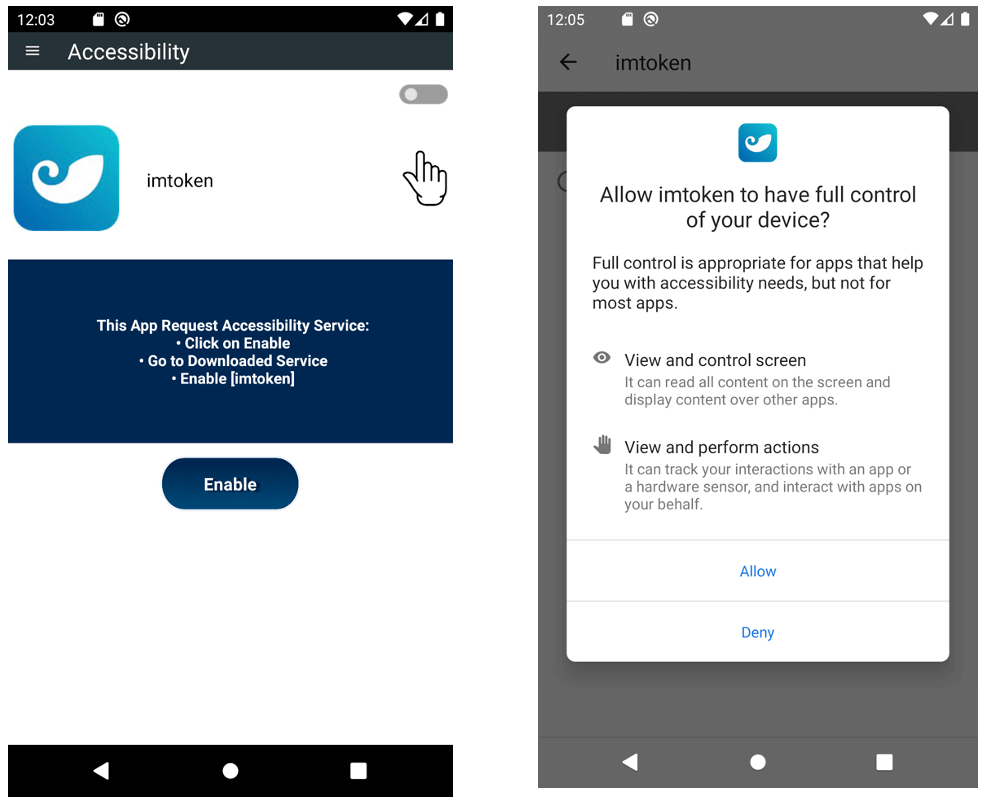[ad_1]
The notorious SpyNote Android spyware returns, exploiting Accessibility APIs to target crypto wallets and unsuspecting users, ultimately stealing their cryptocurrency.
The Android spyware SpyNote developers are now considering cryptocurrencies, extending beyond mere credentials spying to initiate cryptocurrency transfers, revealed the latest research report from FortiGuard Labs.
Researchers noted that Spynote, a notorious Remote Access Trojan (RAT), is now targeting “famous crypto wallets” by abusing the Accessibility API. The API’s job is to automatically perform UI actions, such as recording device unlocking gestures and is mainly helpful for people with disabilities.
The malicious code abuses the Accessibility API to automatically fill out a form and transfer cryptocurrency to cyber criminals. It reads and memorizes the destination wallet address and amount, and replaces it with the attacker’s crypto wallet address.
The information is sent to a remote server with which the malware has established a connection already to complete the action. It is worth noting that the entire act is completed automatically, without alerting the user.
According to Fortinet’s blog post, on 1st February, a malicious sample was found posing as a legitimate crypto wallet, incorporating SpyNote RAT and anti-analysis features. They also observed that threat actors are mainly targeting users with mobile crypto wallets or banking applications in this financially motivated, medium-severity hacking saga.
Researchers showed screenshots in which SpyNote malware can be seen requesting Accessibility Service and the user granting access with the Android OS displaying additional warnings. It is evident that clicking on “Allow” signals the malware to perform its nefarious action whereas clicking “Deny” prevents it from gaining access.
Hackread has been following the evolution of SpyNote ever since it made its first appearance back in 2016 when Palo Alto’s Unit 42 discovered this RAT on a dark net forum mainly targeting users who install APK apps. Researchers noted that SpyNote helped attackers gain remote control of infected devices, and enabled sideloading on Android devices.
In 2017, Zscaler IT security researchers discovered fake apps infected with the SpyNote RAT, allowing attackers to gain remote administrative control on Android devices. Researchers identified various apps, including fake Netflix, WhatsApp, YouTube, Facebook, Photoshop, SkyTV, Hotstar, Trump Dash PokemonGo, etc., infected with a new variant of SpyNote RAT.
Over the years, SpyNote has become a common family of Android malware, with over 10,000 samples and multiple variants, noted FortiGuard researchers.
Last year, the malware authors shifted focus to banking fraud, as the Cleafy Threat Intelligence Team reported SpyNote targeting European financial institutions with social engineering tactics and abusing Accessibility services. The attack started with deceptive smishing campaigns, directing victims to install a “new certified banking app” and granting remote access to their devices.
It is worth noting that malware often lures victims into giving them the necessary rights to access the Accessibility API through different lures, posing a threat to users, especially people with disabilities.
Android users are advised to pay attention to applications requesting the Accessibility API. End-users should treat these requests as suspicious, especially from alleged crypto wallets, PDF readers, and video players.
RELATED ARTICLES
- Watch out: New Android spyware records your calls covertly
- LetMeSpy Android Spyware Service Shuts Down After Data Breach
- Confucius Android spyware hits military, nuclear entities in Pakistan
- Xamalicious Backdoor Infects 25 Android Apps, Affects 327K Devices
- Hackers spread Android spyware through Facebook using Fake profiles
[ad_2]
Source link

